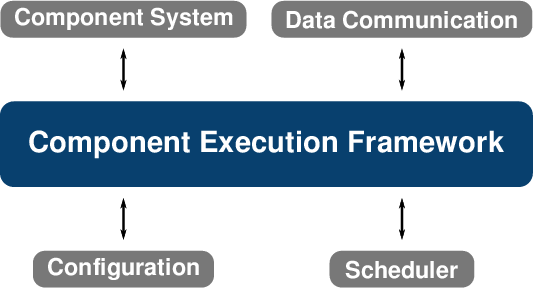
The availability of highly diverse parallel computing platforms promises significant speedups for HPC-focused applications, among the potential beneficiaries are component execution frameworks. A component execution framework involves several essential aspects (Figure 5.7). The component system enables to implement reusable components via defined interfaces. Data communication enables components to receive and forward data from and to other components, thus representing dependencies. Scheduler routines - supporting parallel execution - are responsible for determining the appropriate component execution order according to the dependencies of the utilized components. Finally, a configuration mechanism allows an appropriate configuration of the framework and the modules. Each of these essential parts are discussed in detail in the following.
